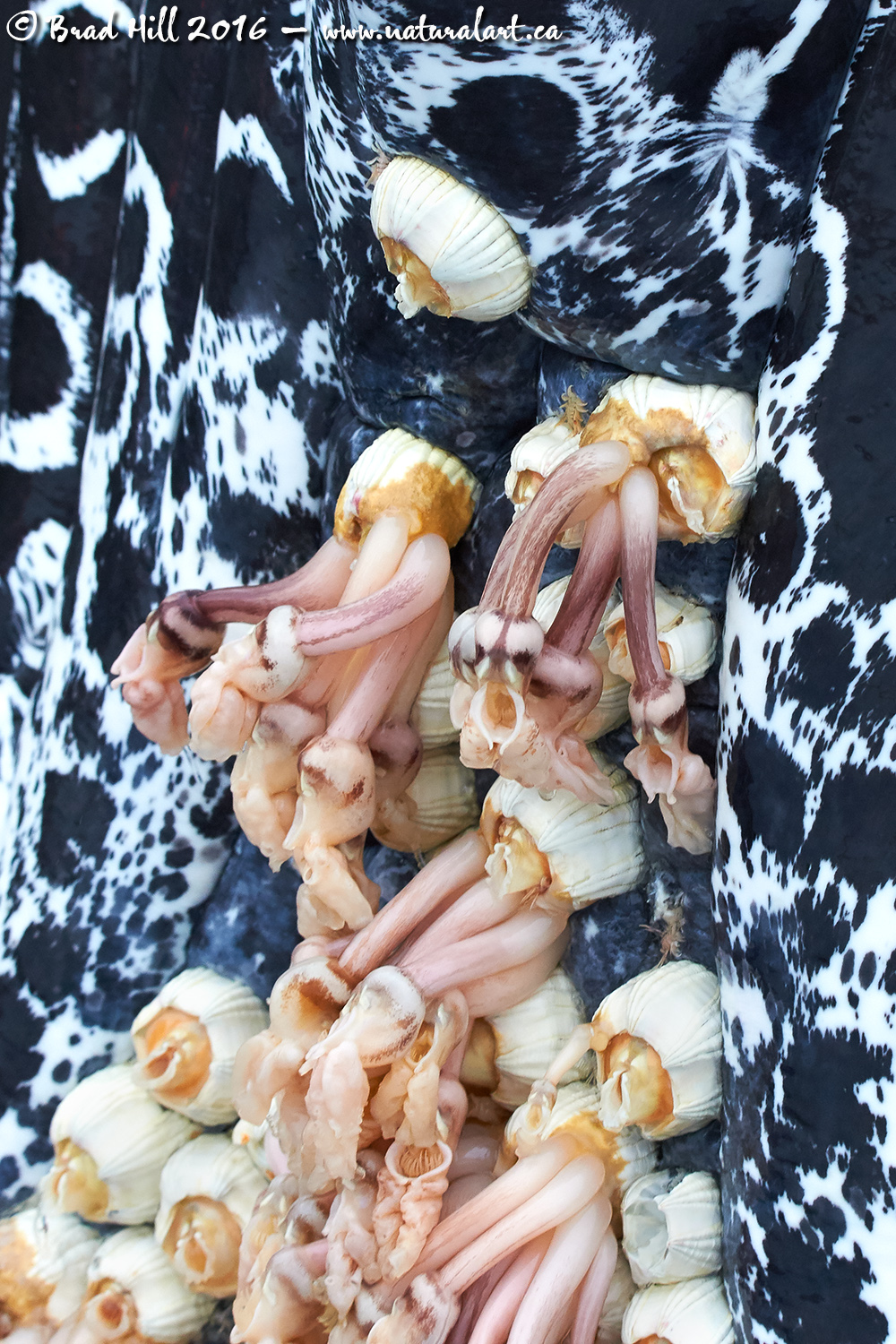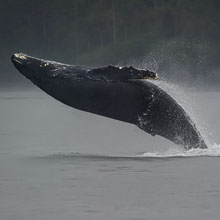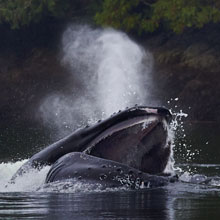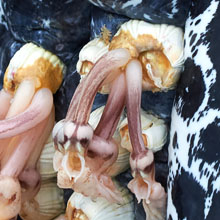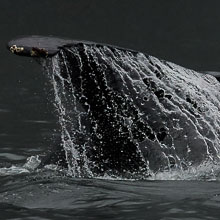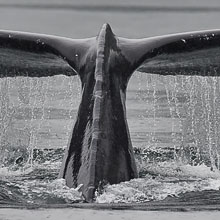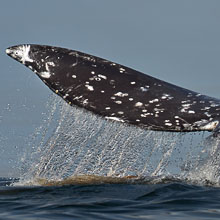Availability: Undetermined - Enquiries?
In the Field
Whaleville, BC. Great Bear Rainforest (central BC coast), BC, Canada. October 7, 2015.
If you take the time to really LOOK, it's hard not to find the natural world absolutely mind-boggling. This is a case where I thought the subject matter in this shot was kinda cool (even if it has a certain element of grossness to it) - but it got WAY more cool when I took the time to do some research...
So...what the heck are we looking at here? Well...many people will recognize that we have some calciferous round barnacles in this shot. A smaller number will probably recognize that there are some Gooseneck barnacles in the image too (those are the long-fleshy things hanging down in the image - and they ARE attached to the round barnacles). But what the heck are the round barnacles attached to? Well that black-and-white substrate happens to be the pleated underside of the lower jaw of a humpback whale. And...when I took the shot the humpback was just a meter or so off to the side of our sailboat and sitting absolutely motionless (and vertical) doing what's called a spy-hop. Yep...it was a very friendly (and darned curious) humpback - it was REALLY checking us out. I could go on and on about how cool this friendly humpback was, but that's kinda another story...
Back to the barnacles. So...after I returned from the trip into the Great Bear Rainforest where I shot this image I did a little research. Turns out the round barnacles are called Humpback Barnacle (Coronula diadema) - and they grow ONLY on humpback whales (how's that for specificity?). The Gooseneck barnacles? They're called Humpback Gooseneck Barnacles (Conchoderma auritum). Where do they grow? ONLY on those round Humpback Barnacles. So...you're looking at both a barnacle that only grows on a humpback, and a barnacle that grows ONLY on a barnacle that grows ONLY on a humpback! Crazy, eh?
Here's a higher-resolution (2400-pixel) version of this shot that shows ALL the creepy-crawlies even better:
• Whaleville, BC: Download 2400 pixel image (JPEG: 1.8 MB)
ADDITIONAL NOTES:
NOTE 1: This image - in all resolutions - is protected by copyright. I'm fine with personal uses of it (including use as desktop backgrounds or screensavers on your own computer), but unauthorized commercial use of the image is prohibited by law. Thanks in advance for respecting my copyright!
NOTE 2: Like all wildlife photographs on this website, this image was captured following the strict ethical guidelines described in The Wildlife FIRST! Principles of Photographer Conduct. I encourage all wildlife photographers to always put the welfare of their subjects above the value of their photographs.
NOTE 3: This image was captured during one of my "Into the Great Bear Rainforest" photo tours in the autumn of 2015. Each year I offer trips into two different parts of the Great Bear Rainforest as well as one to photograph aquatic mammals and oceanscapes near the northern tip of Vancouver Island. And, in selected years, I also offer photo tours to locations to capture other highly sought-after subjects, such as various owl species of the boreal forest and wildlife of Canada's Arctic. Details about these trips can be found on the Photo Tours page of this website.
Behind the Camera
Whaleville, BC. Great Bear Rainforest (central BC coast), BC, Canada. October 7, 2015.
Digital Capture; Compressed RAW (NEF) 14-bit format; ISO 1800.
Nikon D4s paired with Sigma Sport 150-600mm zoom lens @ 185mm. Hand-held from sailboat. Optical Stabilization on and in "OS1" mode.
1/400s @ f7.1; -1.0 stop compensation from "recommended" matrix-metered exposure setting.
At the Computer
Whaleville, BC. Great Bear Rainforest (central BC coast), BC, Canada. October 7, 2015.
RAW Conversion to 16-bit TIFF using Phase One's Capture One Pro 8.
Further digital corrections on resulting 16-bit TIFF files using Adobe's Photoshop CC 2015. Photoshop adjustments included minor exposure and colour saturation tweaks, and final selective sharpening for web output.
Conservation
Whaleville, BC. Great Bear Rainforest (central BC coast), BC, Canada. October 7, 2015.
Ten percent of the revenue generated by this image will be donated to Raincoast*.
Species Status in Canada**: Threatened - North Pacific population (May 2003).
Humpback Whales (Megaptera novaeagnliae) are active, acrobatic whales that can throw themselves completely clear of the water (a behaviour known as breaching) and will swim on their backs with both flippers in the air. Humpbacks are large (up to 14m - or 46 feet - in length and 40 tonnes in weight) and with huge flippers.
Humpbacks are found in tropical, temperate, and sub-polar waters around the world. They are found on both the east and west coasts of North America. The North Pacific population has been estimated at between 6,000 and 8,000 individuals, but only a few hundred of these are found in the waters off the coast of British Columbia.
While Humpbacks are recovering from the damage done to their populations by commercial fishing, the are still subject to a variety of threats from human activities, including becoming entangled in fishing nets, noise and chemical pollution and habitat destruction.
*The Raincoast Conservation Society (and Foundation) is an effective and efficient organization that has been fighting for protection of this unique habitat. If you are looking for a meaningful way to contribute to the conservation of this amazing ecosystem, Raincoast will provide maximal "bang" for your conservation dollars.
**as determined by COSEWIC: The Committee on the Status of Endangered Wildlife in Canada












